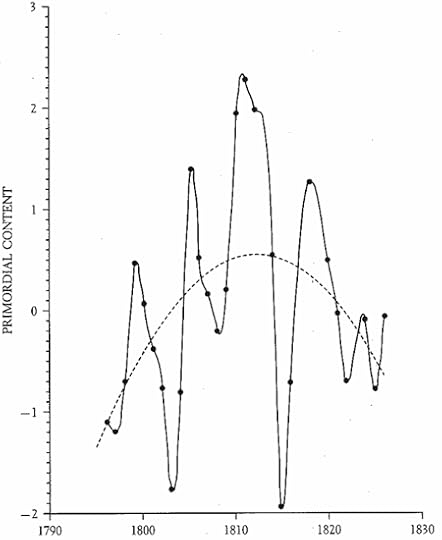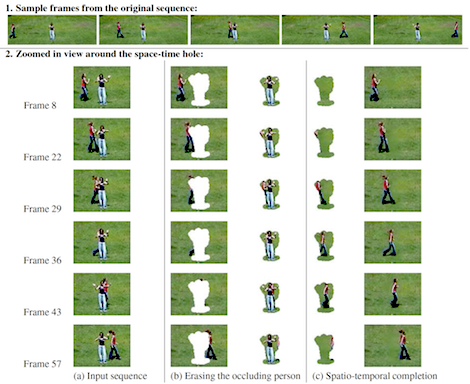Marc Abrahams's Blog, page 608
January 8, 2012
Humming in academia (part 2 [itself also with 4 parts])
A partial interdisciplinary overview of some of the recent literature [this is part 2 of a 4-part series]
Telecommunications
Cancellation of humming GSM mobile telephone noise
"A sometimes annoying problem in the most internationally widespread cellular telephone system, the GSM system, is an interfering signal generated by the switching nature of TDMA cellular telephone system"
Industrial engineering
On-Line Monitoring Systems Help Silence Combustor Humming
"Real-time monitoring of flame instability can save gas turbine owners from millions of dollars in damage due to 'combustor humming."
Vocalization
The Importance of Humming for Vocality Learning
"Humming is a good way to learn vocality. It can make the learners master the singing mood and position more quickly, and help them find the correct breathing pivot to gain the high position of vocality."
Psychoanalysis
On humming: reflections on Marion Milner's contribution to psychoanalysis
"Like doodling, humming exists in a space that links the inner and the outer, subjective and objective realities: "
part 3 coming soon

How to write a book semi-automatically
To semi-automatically compose a non-fiction book, or several hundred thousand of them, one can observe the methods of Professor Philip M. Parker (of INSEAD), of whom we have written (semi-automatically) many times.
To semi-automatically compose a work of fiction, one can learn much by reading Michelle Legro's essay in Brain Pickings. It begins:
Plotto: The Master Book of All Plots
You are an author about write a story. How shall it begin? Perhaps there is a single, basic plot: a conflict that needs to be resolved. Perhaps there are two questions to be answered: will my story have a happy ending or a sad ending? Perhaps the conflict has one of several distinct oppositions: man vs nature, man vs. technology, man vs. god or man vs. self.
In 1894, French critic Georges Polti recognized thirty-six possible plots, which included conflicts such as Supplication, Pursuit, Self-sacrifice, Adultery, Revolt, the Enigma, Abduction, and Disaster. In 1928, dime novelist William Wallace Cook, author of Plotto: The Master Book of All Plots, did him one better, cataloging every narrative he could think of through a method that bordered on madness. His final plot count? 1,462. Plotto, reissued last month by Tin House, was a manual that aimed to mechanize the entire narrative trade….
(HT investigator Estelle Capablanca)
BONUS: Further Advances in Brainless Writing

Happy New Year from the luxuriant-haired Prof. Kumar
Luxuriant Flowing Hair Club for Scientists (LFHCfS) member Arunachalam Kumar sent us a New Year's greeting in the form of this YouTube video:
The video comes with the caption "Ambidextrous anatomist Prof. Arunachalam Kumar of Nitte University, Mangalore India, lecturing to medical students."
Dr. Kumar is a colorful character. Among his many innovations: the "Black Toe" for cricket bats won a prize in the Intel Sports Inventor contest, Dr. Kumar says it "has the potential to completely change the face of the sport" of cricket. This video shows details of the competition, and then of the Black Toe:
BONUS: Dr. Kumar also made a video of the twelve foot Indian Python that he found slithering in his house garden in mid-afternoon on 27th Nov 2011:

Dead co-authors (1)
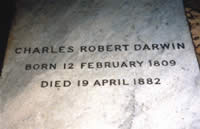 The Anole Annals (which are 'written and edited by scientists who study Anolis lizards') posed an intriguing question: "how far one could take posthumous co-authorship. What's stopping me from including Darwin as a co-author on my next manuscript?"
The Anole Annals (which are 'written and edited by scientists who study Anolis lizards') posed an intriguing question: "how far one could take posthumous co-authorship. What's stopping me from including Darwin as a co-author on my next manuscript?"
In the paper that triggered this dilemma — Poe et al. (2009) — Poe and his still living co-author Velasco list two deceased co-authors: the Harvard herpetologist Ernest Edward Williams (1914-1998) and Kenneth Ichiro Miyata (1951-1983), Harvard herpetologist (and one of the most famous fly-fishermen in the world).
The Online Ethics Center (OEC) also addressed The Deceased Author, evaluating the case of 'a recent publication in an established biomedical journal, contributed by multiple authors from a respected university, [that] lists one of the authors as Dr. Mortis, who has been dead for the past four years'.
Please send (proof of) your favorite long dead co-author to kees.moeliker [at] improbable.com
Thanks to Jonathan B. Losos (@JLosos) for pointing us at the existence of dead co-authors.

January 7, 2012
Primordial content in Beethoven
The Three-Toed Sloth blog writes about a confusing, and perhaps confused concept:
Here is Martindale's Figure 9.1 (p. 288), supposedly showing the amount of "primordial content" in Beethoven's musical compositions from 1795 through 1826, or rather a two-year moving average of this:
Let us leave to one side the very difficult questions of how to measure "primordial content"; Martindale, like too many psychologists, is slave to quite confused ideas…

Ritual: Carp's sake-drinking
One of our readers, a scientist who spent the first half of his life in Japan, tells of a ritual that seems to be not terribly well known or studied. He writes:
This is a strange tradition in some part of Japan which I was not aware of until today, when I saw a report in Yomiuri Shumbun.
Carp — the fish — are made to drink "sake" (Japanese wine) before they are released into a river. People believe this ceremony helps to get rid of evil.

January 6, 2012
Humming in academia (part 1,[itself with 4 parts])
A partial interdisciplinary overview of some of the recent literature
Security
Humming-based human verification and identification
"The experimental results show that linear prediction cepstral coefficients and perceptually linear prediction coefficients are conducive to verification and identification, respectively."
Medicine
Strong humming for one hour daily to terminate chronic rhinosinusitis in four days:
"The morning after the first 1-hour humming session, the subject awoke with a clear nose and found himself breathing easily through his nose for the first time in over 1 month."
Internet
Query by humming: a time series database approach (2003)
"A Query by Humming system allows the user to find a song by humming part of the tune."
Zoology
Humming in bears: a peculiar sustained mammalian vocalization (2007)
"Humming is present in all extant species of the Ursidae with the exception of the giant panda. It has similar structural characteristics and the same mode of sound production in all species."
(part 2 coming soon)

If you come across a time hole, do not panic: How to fill it.
Time holes are in the news. The headline from Wired is typical:
Pentagon Scientists Use 'Time Hole' to Make Events Disappear
If you come across a time hole, do not panic. A study published several years ago tells how to fill that hole:
"Space-Time Video Completion," Y. Wexler, E. Shechtman, M. Irani,. Proceedings of the 2004 IEEE Computer Society Conference on Computer Vision and Pattern Recognition, 2004, 27 June-2 July 2004, pp. I-120 – I-127. The authors, at the Weizmann Institute of Science, Rehovot, Israel, report:
"We present a method for space-time completion of large space-time "holes" in video sequences of complex dynamic scenes. The missing portions are filled-in by sampling spatio-temporal patches from the available parts of the video, while enforcing global spatio-temporal consistency between all patches in and around the hole."

January 5, 2012
Sheldrake and his "Delusions"
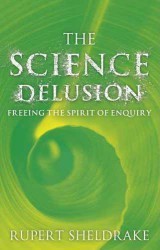 For some scientists, most notably and loudly professor Richard Dawkins, belief in God is a "delusion". For at least one professed scientist, though, science is a "delusion".
For some scientists, most notably and loudly professor Richard Dawkins, belief in God is a "delusion". For at least one professed scientist, though, science is a "delusion".
That professed scientist is Dr. Rupert Sheldrake.
Dr. Rupert Sheldrake's new book is called The Science Delusion: Freeing the Spirit of Inquiry. It will be officially launched at the Great Hall of King's College London, on 17 January 2012 at 7pm (and again, shortly afterwards, at 9.30 pm)
Dr. Sheldrake has also written, Sheldrakianly, about Dogs That Know When Their Owners Are Coming Home and the Sense Of Being Stared At.
Note: The new book is not to be confused with a book called The Science Delusion – Why God is real and science is religious myth, by Peter Wilberg. (2010)
BONUS: A video of Rupert Sheldrake making as much sense as he always does:
BONUS: A funtime question for recreational philosophers: If someone who says he is a scientist says that science is a delusion, is this a case of recursive delusion?

LOLspeak for Linguistics Lasses & Lads
Lotsa linguistics lasses and lads like or love LOLspeak. In Australia, two of them did a talk about it, which you can read about or, less literarily, look at and listen to on video:
"I can haz speech play: The construction of language and identity in LOLspeak," Lauren Gawne [pictured here], Jill Vaughan, Canberra Langfest 2011, ALS2011: Australian Linguistics Society Annual Conference: Conference proceedings. The authors write:
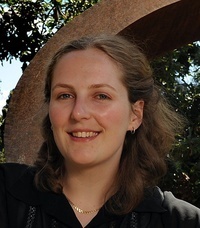 LOLspeak is a complex and systematic reimagining of the English language. It is most often associated with the popular, productive and long-lasting internet meme 'LOLcats'. This style of English is characterised by the simultaneous playful manipulation of multiple levels of language in order to perform an authentic 'cat' voice, and serves both as an entertaining in-group practice and as a cultural index which is recruited in the construction of identity…. [We] use Bucholtz and Hall's (e.g. 2005) interactional and ethnographic approach to linguistic analysis to examine how the speech play strategies used by participants allow for the simultaneous construction of two identities: firstly the identities of the cats that they claim to be speaking for, and secondly their own identity as savvy members of an online community of practice (Jones & Schieffelin 2009).
LOLspeak is a complex and systematic reimagining of the English language. It is most often associated with the popular, productive and long-lasting internet meme 'LOLcats'. This style of English is characterised by the simultaneous playful manipulation of multiple levels of language in order to perform an authentic 'cat' voice, and serves both as an entertaining in-group practice and as a cultural index which is recruited in the construction of identity…. [We] use Bucholtz and Hall's (e.g. 2005) interactional and ethnographic approach to linguistic analysis to examine how the speech play strategies used by participants allow for the simultaneous construction of two identities: firstly the identities of the cats that they claim to be speaking for, and secondly their own identity as savvy members of an online community of practice (Jones & Schieffelin 2009).
(Thanks to investigator Steve Pomeroy for bringing this to our attention.)
BONUS: Jordan Lefler's master's thesis, Louisiana State University, December 2011: "I Can Has Thesis?: A Linguistic Analysis of LOLspeak."

Marc Abrahams's Blog
- Marc Abrahams's profile
- 14 followers











